Dublin's Free Museums and Galleries
Updated January 2024–Among the things to do in Dublin are a myriad of free activities. Here are some of Dublin's free museums and galleries that you should check out while staying in Ireland's capital.
This page contains affiliate links, and I may earn compensation when you click on the links at no additional cost to you.
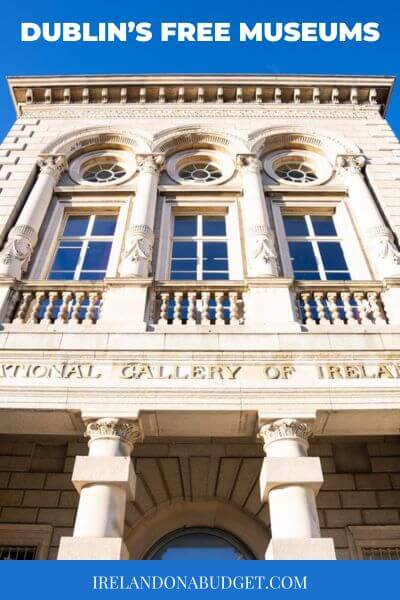
The National Library of Ireland
The National Library of Ireland houses a large collection of books, maps, manuscripts, music, newspaper archives, periodicals, and photographs.
It is of special interest to those researching their family history, allowing visitors to access census and civil records, as well as the Catholic Parish Registers.
The library also provides a free family history service, which is located in the main building above the entrance hall.
Research spaces, with computers, are available if you want to access digital documents related to your family, as well as other reference material on genealogy.
You must get a reader's ticket before you visit. They are available to anyone over the age of 16 and are valid for three years.
The family history reading room is open Monday through Friday from 10:30 a.m. to 12:30 p.m. and from 2-4 p.m., and on Tuesdays from 5-7 p.m. and on Saturdays from 9:30 a.m. to 1 p.m. on specific dates only.
You can also book an in-person consultation with a member of the library's family history team by emailing [email protected].
The National Gallery of Ireland
Established in 1864, the National Gallery of Ireland houses an extensive collection of Irish, Italian Baroque, and Dutch masters paintings.
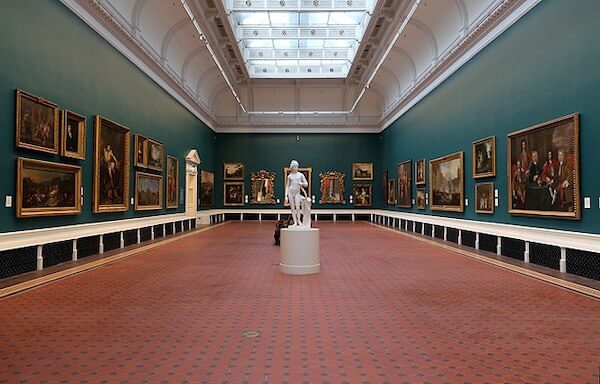
A good way to see its permanent collection is to take its free guided “Highlights Tour,” which includes highlights of its permanent collection, which is offered on Saturdays at 12.30 p.m. and 2.30 p.m, as well as Sundays at 1.30 p.m. and 2.30 p.m.
You can take a self-guided tour of the gallery's exhibitions or avail of the other guided tours that are offered on a regular basis.
The gallery is open 7 days a week. You can find more information about tours at the gallery here.
Explore Dublin with the Go City Pass
The Hugh Lane Gallery
This is the first known public gallery of modern art in the world.
Founded in 1908 by Sir Hugh Lane, an Irish art dealer, collector, and gallery director, it includes a permanent exhibition and other revolving exhibitions, mostly by contemporary Irish artists.
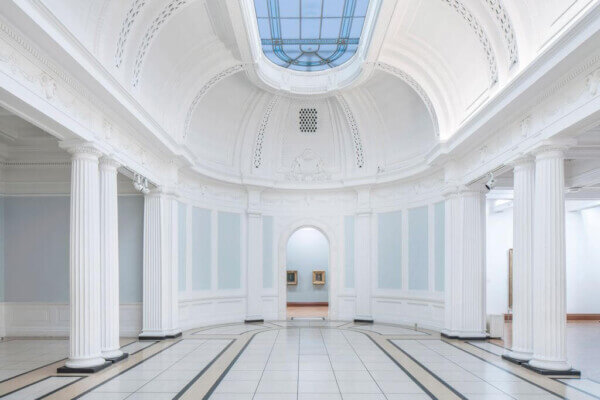
Be sure to visit the stained glass room, which contains a popular piece called “The Eve of St. Agnes,” as well as other stained glass works from 20th-century glass artists.
The museum is located in Charlemont House at the top of O'Connell Street.
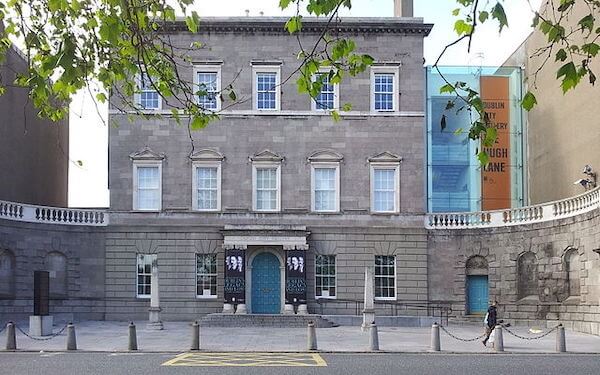
The building, constructed in 1763, was built for James Caulfield, the First Earl of Charlemont. It was turned into a public art gallery in 1933.
The Sunday Public Tours, held every Sunday at 2:15 p.m., are popular and highlight the museum collections and temporary exhibitions.
The museum is open Tuesday through Thursday from 9:45 a.m. to 6 p.m., on Friday from 9:45 a.m. to 5 p.m., on Saturday from 10 a.m. to 5 p.m., and on Sunday from 11 a.m. to 5 p.m.
The Chester Beatty Library
Lonely Planet has described this free museum as the best in Europe, and it is easy to see why.
Located on the grounds of Dublin Castle, this popular museum houses an amazing collection of 20,000 manuscripts, rare books, miniature paintings, clay tablets, costumes, and other historical and aesthetically important artifacts.
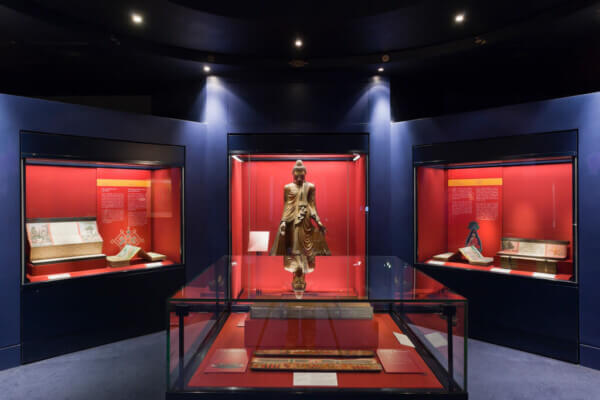
The museum is named after Sir Alfred Chester Beatty, a New Yorker and mining magnate, who was also an avid collector of European and Persian manuscripts, as well as Chinese snuff bottles and Japanese netsuke (miniature sculptures).
After his move to Dublin in 1950, Beatty established the Chester Beatty Library in another part of the city, to house his collection. They were all bequeathed to the Irish people and entrusted to the care of the state in his Irish will.
A visit to this museum is well worth the trip.
Free public tours suitable for 15 people and under run every Wednesday at 5:30 p.m., Saturdays a11 a.m., and Sundays at 3 p.m. The tours last about one hour.
See Dublin on a Hop On Hop Off Bus Tour
Irish Museum of Modern Art
This is Ireland's leading institution for the collection of modern and contemporary art. Otherwise known as IMMA, it includes a number of recurring exhibitions.
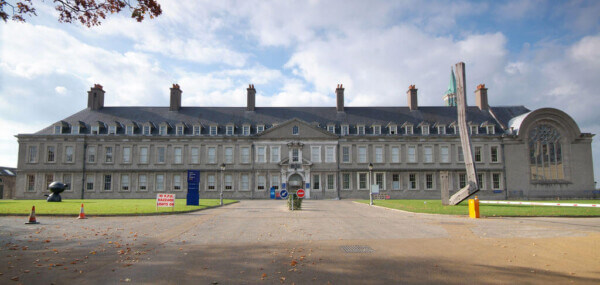
The museum offers informal weekly guided tours that are designed to introduce visitors to current exhibitions at IMMA.
They take place Wednesdays, Saturdays and Sundays at 2:30 p.m.
Through April 2024, you can view the museum's largest exhibit to date titled “Self-Determination: A Global Perspective,” which explores the role of art and artists in the nation-states that were established after World War I, and in particular, the expression of national identities that defined each country.
Take a Tour of the Book of Kells and Dublin Castle
The National Museum of Ireland
Of all Dublin's free museums and galleries, the National Museum of Ireland is by far the largest, encompassing four separate museums.
They include the National Museum of Archaeology on Kildare Street, the Decorative Arts & History Museum at Collins Barracks, and the Natural History Museum at Merrion Square, as well as the Country Life Museum located in Turlough, County Mayo.
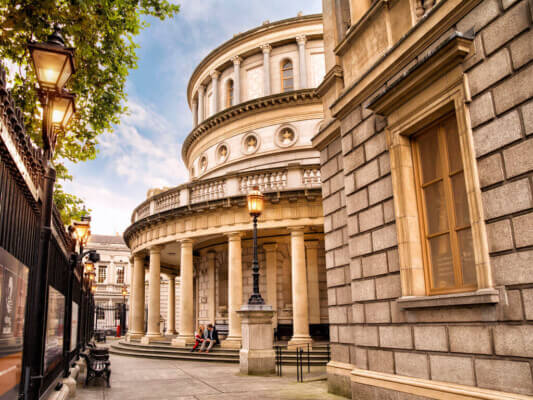
All four museum sites are open Tuesday to Saturday from 10 a.m. to 5 p.m., with closure on Thursdays during July, August, September and October at 8 p.m., in addition to Sundays and Mondays from 1 p.m. to 5 p.m. Admission is free to all of them.
Bank of Ireland Building (House of Lords)
This magnificent building occupying one side of College Green was the home of the Irish Parliament House until 1801, at which time the Act of Union was put into law, which united Great Britain and Ireland under the United Kingdom of Great Britain and Ireland.
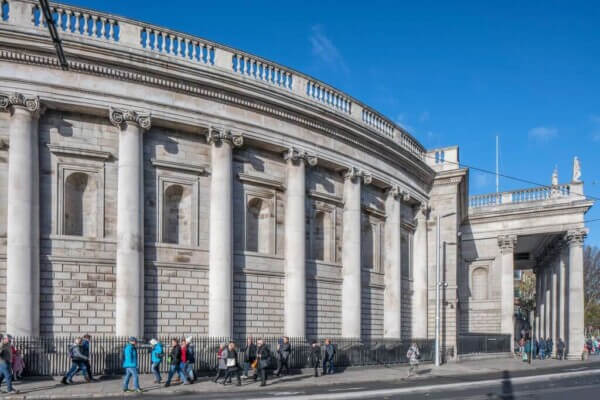
The building's central House of Commons was remodeled, so there is no evidence that it was even there.
However, the smaller chamber, the House of Lords, was left untouched and is free to visit.
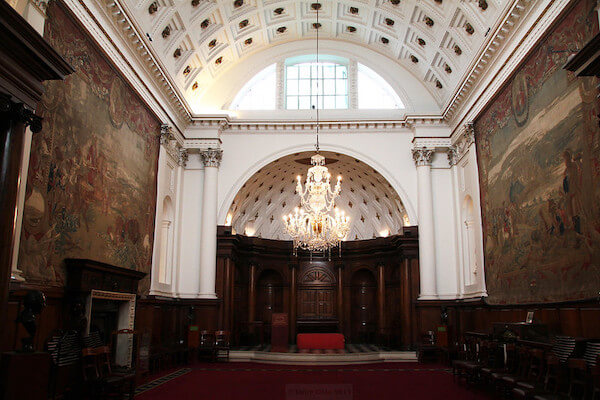
The chamber includes Irish oak woodwork, a mahogany longcase parliament clock, and a late 18th-century Dublin crystal chandelier.
It is said that the design was used to create the U.S. House of Representatives in Washington, D.C.
Visitors can walk in and see the attraction during regular banking hours.
Take $25 off your hotel reservation when you sign up with Hopper. Click on the link below to get the special Ireland on a Budget savings code.
The James Joyce Tower and Museum
The Martello tower in the seaside village of Sandycove, about 7 miles from Dublin’s City center, is where Irish writer James Joyce spent six nights in 1904.
Known as the James Joyce Tower and Museum, it left such an impression on Joyce that inspiration for the opening scenes of his novel, “Ulysses,” came from there.
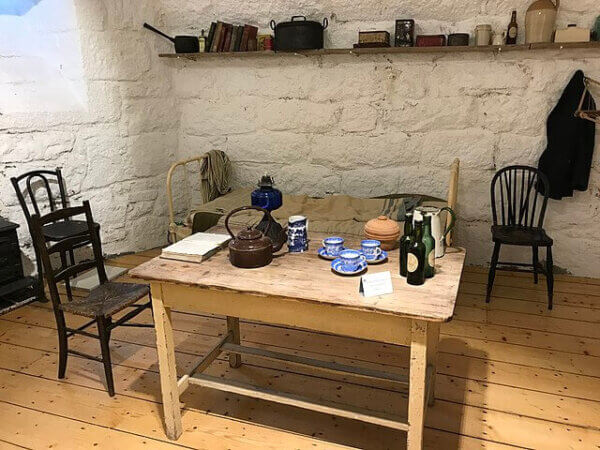
His university friend, Oliver St. John Gogarty, was already living in the tower when he moved in. On Sept. 14, 1904, Joyce abruptly left and soon after, moved to Zurich, Switzerland, with his partner and later wife Norah Barnacle.
Inside the tower/museum, you’ll find some of Joyce’s possessions and other objects associated with the Ulysses novel. The living space is set up to resemble what a room in 1904 would have looked like.
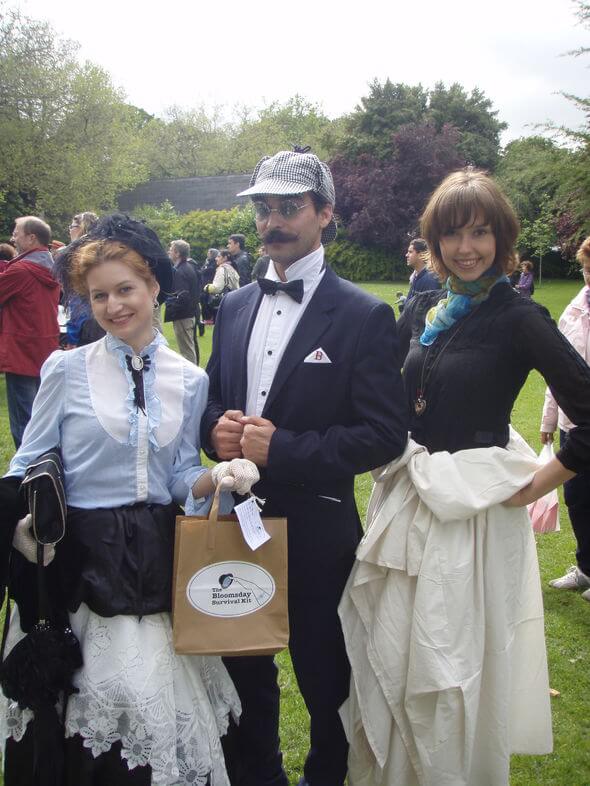
This museum is a place of pilgrimage for Joyce devotees, especially on June 16th, known as Bloomsday, one day in a 6-day celebration in Dublin called the Bloomsday Festival.
From the tower, you’ll get panoramic views of nearby Dun Laoghaire (pronounced “Done Leerey”) and the South Dublin coastline.
The museum is open from Tuesday through Saturday from 10:30 a.m. to 4:30 p.m. While admission is free, donations are welcome.
Feel free to visit Dublin's free museums and galleries on your next visit to the capital city.

